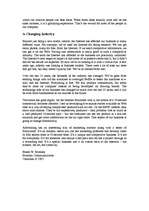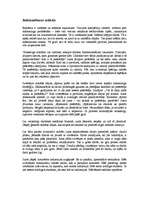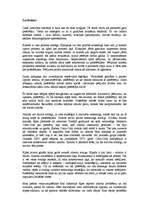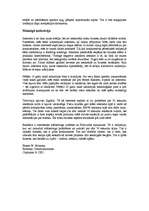-
The Art of Advertising
Advertising is a mix of science and art. Most companies approach marketing problems in the same way – we all do a certain level of copy testing, using qualitative and/or quantitative research techniques. That is the science side of it. The art is in the ideas. It’s in being able to see something that others don’t see and to develop creative ideas around it. There’s a lot of art to that. It’s not just something you can wake up one morning and do.
There are some fundamental rules which successful advertising must follow. First, you need to understand the brand you’re about to take on. Ask questions such as: What are its core equities? Who are the brand’s consumers? From there, you need to understand the consumers and observe how that brand fits into their lives and their day-to-day routines. Once you’ve got that, you can develop a strong, critical consumer insight. Then marry that insight with the core equities of the brand. That way the insight becomes brand-centric. After that, you provide a strong creative brief that helps the creative understand the brand, the barriers the brand might face, and exactly what it is that the advertising should do.
In reviewing the creative’s ideas, it is important that you keep in mind whether they really deliver on the marketing strategy. You need to set aside your own tastes and put yourself in the consumer’s shoes, because nine times out of 10 you aren’t the target consumer anyway. Ask, “Will this idea connect to the consumer?” Once you’ve completed your review, take the ideas to the client. You have to listen to the client, because its job is to protect the core equities of the brand. The client needs to feel comfortable, but also needs to judge the idea the way you did – will it connect? You need to cut through the clutter, engage the consumers, and persuade them to take an action or purchase the product. At the end of the process, you need to get the results and learn from them. Don’t be disheartened if the results are negative: Understand what went wrong. If the process worked well, understand what made it successful and keep it going.
To succeed in the advertising business, you must be able to see opportunity in the abstract and then, you must make it real. From there, you develop creative ideas that will serve as vehicles to communicate and generate a response.
…
Šis ir reklāmas speciālista un autoritātes Ernest W. Bromley veidots stāstījums par reklāmas mākslas pamatprincipiem, izrāvienu un reklāmas industriju kopumā. Dokuments sastāv no 3 lpp. angļu valodā un 3 lpp. latviski. Darbs noderēs gan kā tulkojums, gan arī papildus informācija reklāmas vai tirgzinību studentiem un interesentiem. Teksts nav pārlieku zinātnisks, tas ir saistošs un viegli uztverams






